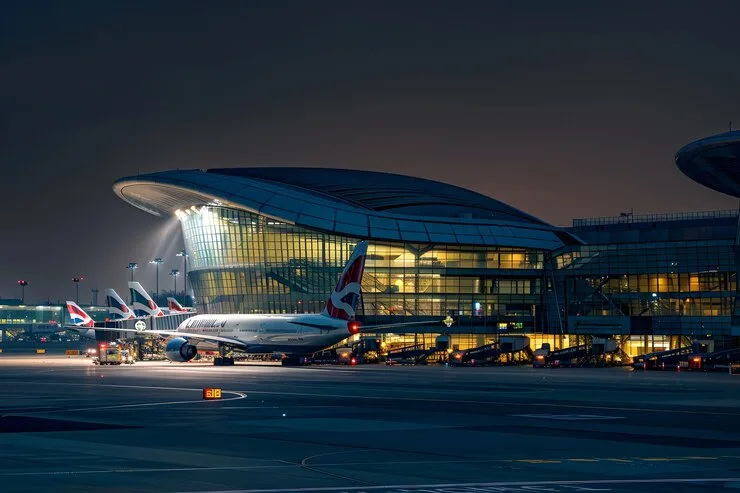
Airport City of London: An Evolution in Business, Travel, and Connectivity
London boasts a strong economy, energetic culture, and unmatched worldwide connectedness. However, shortly it will be the site of an interesting new project called Airport City of London, which promises to change its residential, commercial, and transportation scenes. This ambitious project will combine commercial real estate, sustainable living, and innovative transportation infrastructure—all strategically connected to the major airports—as London continues to be a worldwide center for international commerce.
The Airport City of London will surely be a game-changer regardless of your interests in the future of London’s urban development, regular flying, or business professionals arranging a taxi from Gatwick to London. This post will discuss Airport City of London, its characteristics, economic influence, and future prospects for this interesting growth.
What is London’s “Airport City”?
Designed to mix business, residential, and transportation hubs around the city’s main airports—including Heathrow, Gatwick, and London City Airport—the massive urban development project known as Airport City of London aims to. The aim is to build a seamless, connected zone where businesses may flourish, citizens may live conveniently, and visitors may rapidly and simply access London’s worldwide network of transportation connections.
Built around the concept of accessibility—capitalizing on London’s air, rail, and road systems to promote cooperation and economic growth—the Airport City of London will differ from conventional commercial districts. This design combines residential areas, businesses, hotels, stores, and offices all with simple access to main transportation hubs. For businesses, tourists, and professionals alike, it therefore claims to be a one-stop shop.
The Airport City of London is located where?
Particularly Heathrow, Gatwick, and London City Airport, the Airport City of London will cover numerous districts around the most busy airports in London.
Already among the busiest airports worldwide, Heathrow Airport, west of downtown London, provides international flights to hundreds of locations.
Especially for long-haul and low-cost flights, Gatwick Airport, south of London, is a main international gateway.
Thanks to its proximity to the financial center, London City Airport, nearer to downtown London, mostly serves business visitors and short-haul flights.
The development would deliberately make use of these airports to establish a business center conveniently reachable by train and road in addition to plane. For instance, it will be closely connected to important train stations via the Crossrail and HS2 systems, therefore guaranteeing quick access to central London and beyond.
Main Characteristics of London Airport City
1. Business Areas and Commercial Real Estate
Particularly in sectors like aviation, finance, logistics, technology, and international trade, the Airport City of London will offer world-class office spaces meant to draw multinational companies. For companies who require quick access to both local and foreign markets, its near proximity to the airports and first-rate transportation options make it appealing.
2. Perfect Linkages for Transportation
Because the Airport City of London will be developed close to important transportation hubs, commuters and visitors will have unparalleled access. Getting about will be quicker and more effective whether your mode of transportation is the enlarged London Underground network, a taxi from Gatwick to London, or a high-speed rail. Important elements consist:
- Fast train links via Crossrail and HS2 help to cut travel time to downtown London.
- Direct links between companies and airports could help to build a new kind of mobility for the city.
- Better taxi routes and an integrated shuttle bus network help to smooth out travels from downtown London to the airports.
3. Residential Areas
London Airport City is a place to live as much as a commercial center. As residential areas are being built inside the district, local workers have choices for homes that cut travel times. These homes will provide handy access to transportation, leisure activities, and offices.
4. Green Areas and Sustainability
The development would revolve mostly on environmental sustainability. Energy-efficient structures, smart city technologies, and large green areas meant to improve the quality of life for residents and employees will abound at the Airport City of London. Urban design will also incorporate sustainable transportation choices such as bike-sharing programs and electric vehicle charging stations.
The Financial Influence of London’s Airport City
Set to be a significant economic force for both local and national economies is the Airport City of London. The following lists some ways the initiative will increase economic activity:
- Thousands of employment in many different fields—including construction, retail, technology, logistics, and business services—will be generated by the development.
- Growing Global Connectivity: Airport City of London will improve London’s standing as a worldwide business hub by combining the corporate area with the international airports, therefore drawing more foreign companies to launch operations.
- Economic Prospects: Companies will be able to set offices and logistical operations in the vicinity more easily if they are close to important transportation hubs, therefore gaining from fast access to world markets.
- With more hotels, stores, and leisure facilities, the expansion will draw both business and leisure visitors, therefore benefiting the hospitality and tourism industries.
Difficulties and Debates
Like any big urban development project, the Airport City of London will have difficulties including:
- Environmental Issues: The site of the project close to big airports begs questions regarding air quality and noise generation. To help to solve these problems, though, green areas and sustainable building techniques are being included.
- Traffic and Congestion: Although the development will offer a lot of choices for transportation, residents of already congested places like Heathrow and Gatwick continue to be worried about rising traffic.
- Development of Land: Land around airports can be challenging due to zoning rules, environmental issues, and the high cost of land.
Future View: London’s Airport City in Ten Years
The influence of Airport City of London will only get more evident as it develops. Focusing on connectivity, sustainability, and commercial innovation, the neighborhood is destined to set a standard for next urban development. Over the next ten years, we should see:
- Increased Transportation Systems: Commuting times will be much shortened when HS2 and Crossrail more effectively link the airports to the rest of London.
- Global Business Hub: The initiative will draw more multinational businesses, especially those concentrated on finance, aviation, and global logistics.
- Technological Integration: From renewable energy sources to sophisticated traffic control, technology will be ingrained throughout the city.
- Changing People’s Way of Life: Business, and travel, the Airport City of London promises to become among the most significant projects in the history of the city.
Questions Regarding London Airport City
Q1: What is London’s Airport City?
Designed to combine business, residential, and transportation nodes close to London’s main airports, the massive urban development project known as Airport City of London aims to. It seeks to establish a vibrant commercial area making use of the city’s road, rail, and air systems.
Q2: How does London’s Airport City affect travel?
By strengthening connection between London’s main airports and the rest of the city, the project will enhance transportation infrastructure. High-speed trains and specialized shuttle buses, among other new transportation options, will speed up and simplify commutes.
Q3: From Gatwick, how may I reach Airport City of London?
From Gatwick to London, a taxi will get you in about a forty-five to sixty-minute ride. Once the development is finished, you could also take shuttle buses or high-speed trains for faster and more direct paths to the corporate district.
Q4: In what way might Airport City of London affect the local economy?
By generating thousands of jobs, drawing international companies, and strengthening London’s position as a major actor in world trade and aviation, the development will propel economic growth.
Q5: Environmental sustainability of the Airport City of London?
Indeed, the growth is intended with sustainability in mind. To reduce its carbon impact, it will include eco-friendly transportation choices, large green areas, and energy-efficient constructions.
Finally: A Vision for the Future of Airport City of London
An ambitious development project aiming at redefining how business, tourism, and urban living interact is the Airport City of London. Leveraging London’s global aviation hub, the plan will create a vibrant environment for both companies and people, so changing the city into a smart, sustainable, and highly linked urban space. The Airport City of London is surely one of the most fascinating urban projects in the world today, whether your plans call for a taxi from Gatwick to London or you wish to establish your company right in the middle of a major international transportation hub.
